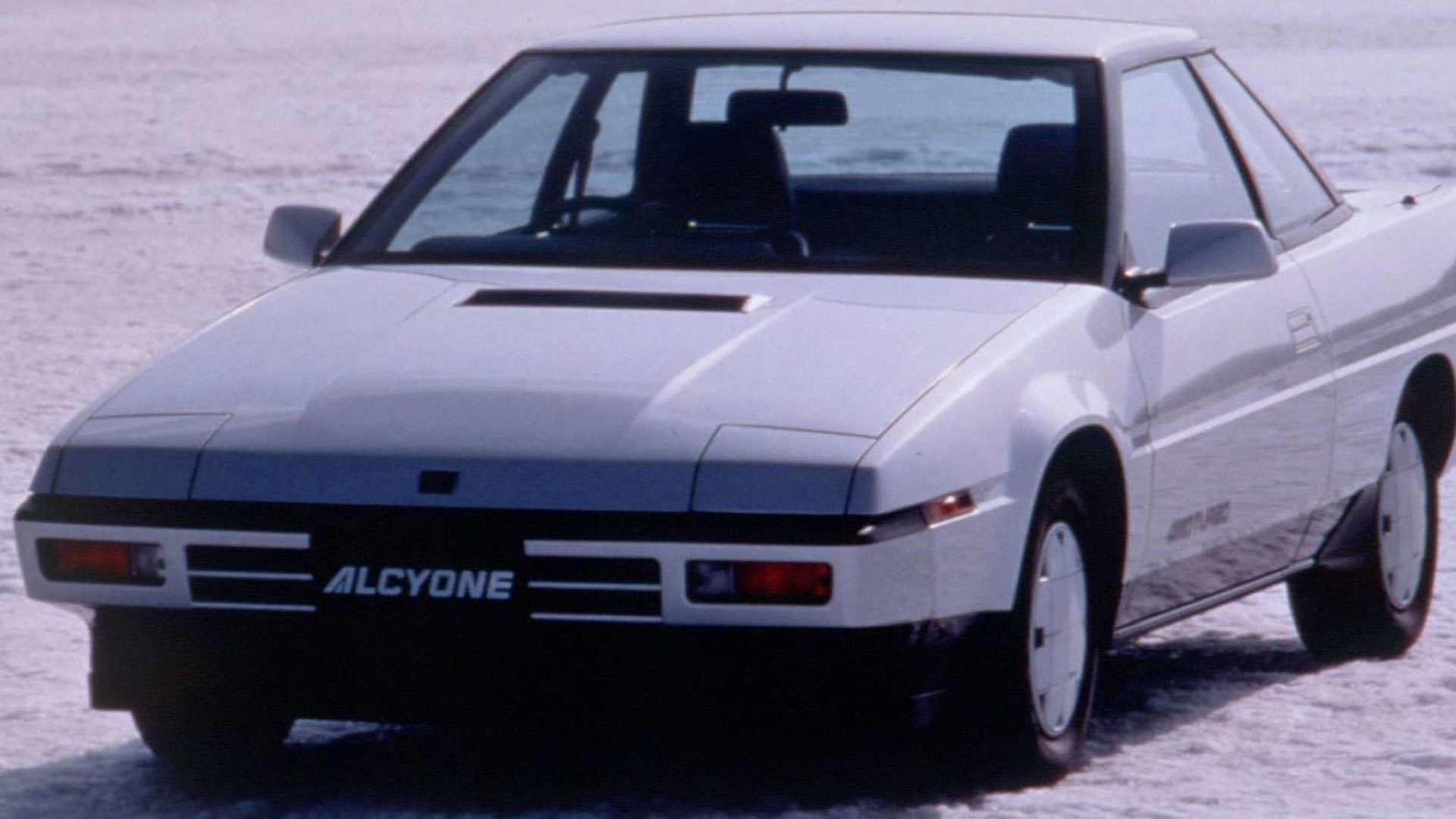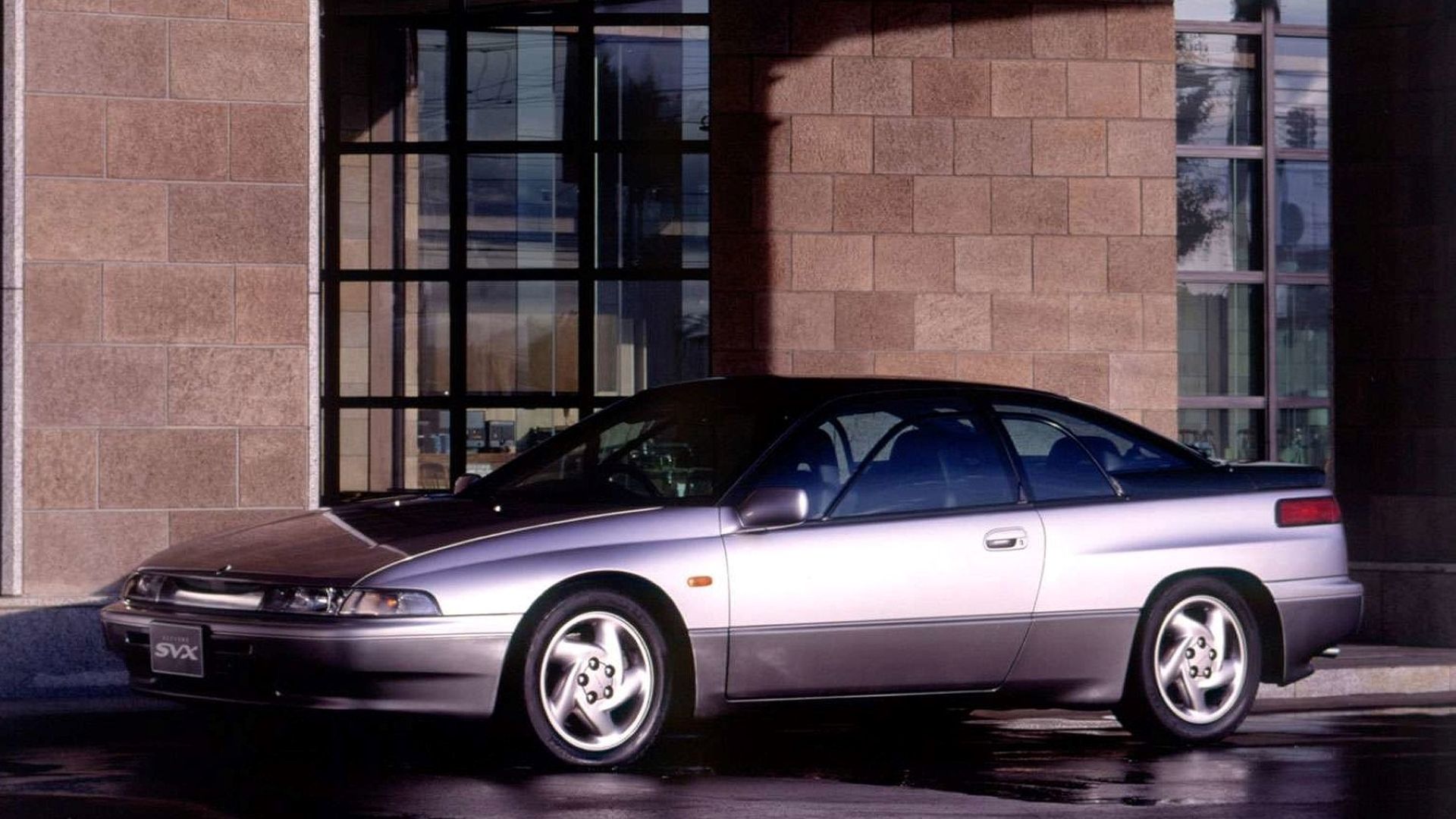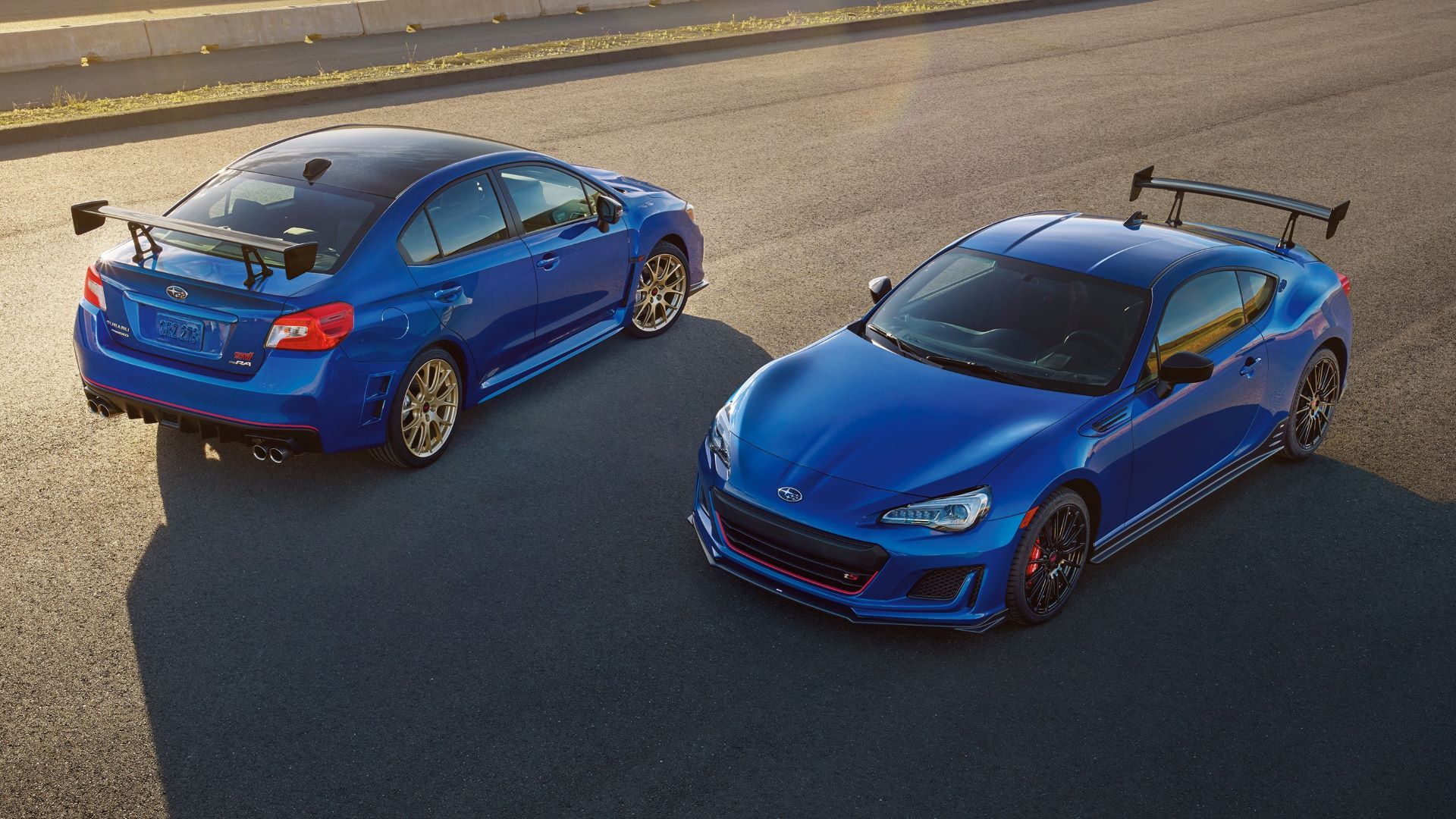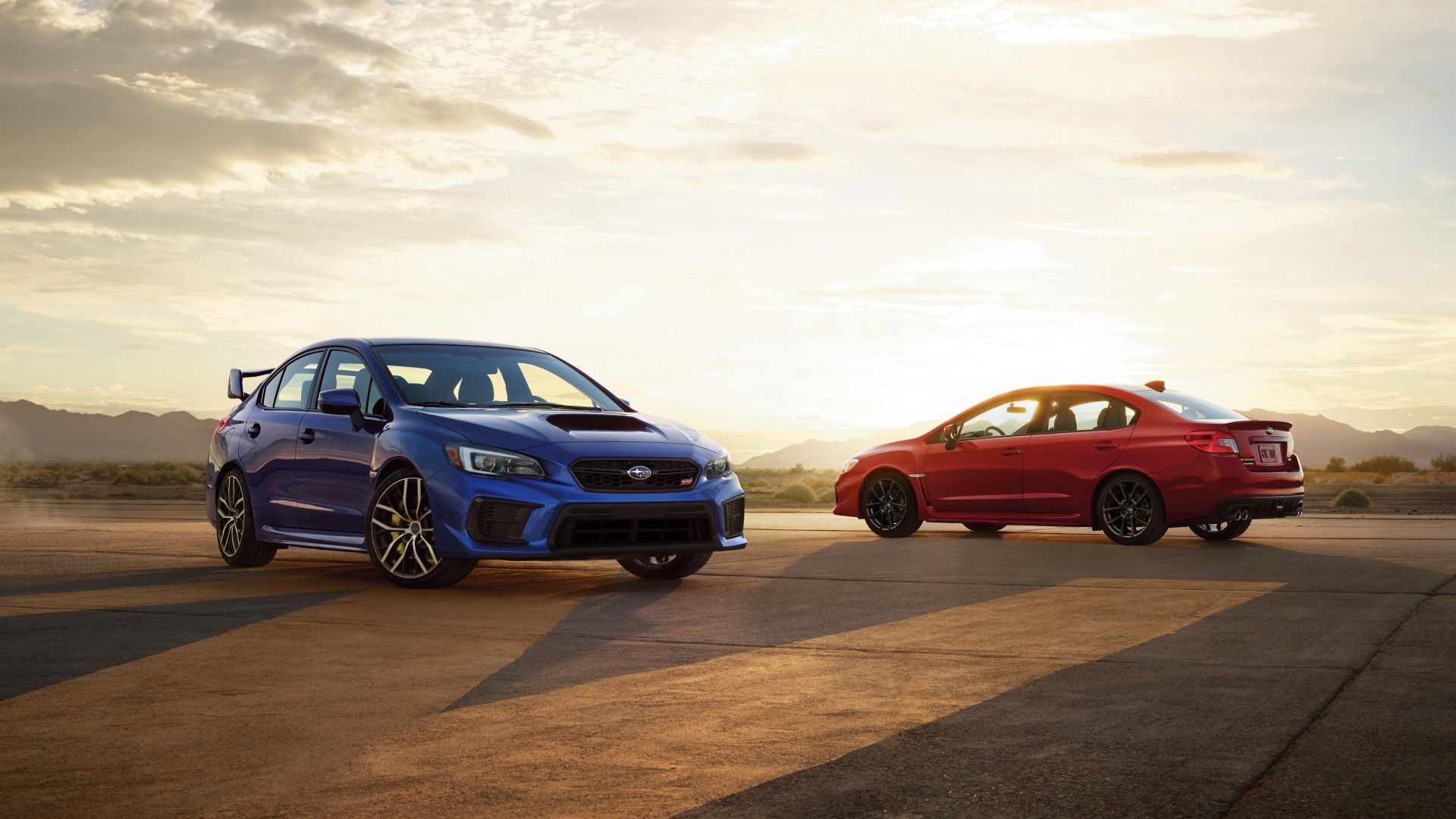Summary
- Subaru has solidified itself as one of the greatest car manufacturers in the world, known for its excellence in making all-wheel drive cars with boxer engines.
- The company’s legacy includes the development of iconic sports cars like the XT coupe and the Impreza WRX, which have garnered praise and established Subaru as rally champions.
- Subaru’s partnership with Toyota resulted in the creation of the highly successful and affordable Subaru BRZ, showcasing the brand’s commitment to making sports cars accessible to the everyday buyer.
A company famed for its history in rally racing, Subaru is a name that rings loud in the ears of many. One of the great Japanese automakers, Subaru has been around and manufacturing cars since as far back as the 1950s. Since their inception they have been dedicated to making excellent cars, their forte being all-wheel drive cars with boxer engines.
They entered the North American market back in the late 1960s and have since become a well-known name in the region. Nissan and Toyota were already well established in the region but Subaru still somehow managed to make a name for themselves. Over time they have developed some best-in-class sports cars, innovated within the industry, and provided drivers with countless amounts of fun.
It’s incredible how throughout Subaru’s long lifetime they have seldom made a car that has completely missed the mark. We take a look at the legacy of this incredible brand and how they have solidified themselves as one of the greatest car manufacturers in the world.
Using information from Subaru press releases, we’ve put together a history of Subaru sports cars.
The Dawn Of The Subaru Sports Car
All the way back in 1970, Subaru was still a new name in the United States and many didn’t know much about them. It was at this time that Subaru released the FF-1, marketed as the Star in the States. This car wasn’t at all a sports car, but it did mark an important development for the brand: the boxer engine.
The horizontally opposed engine, or the boxer, has become a hallmark of Subaru and something that they attribute a lot of their success to. It’s something that throughout Subaru’s long life they haven’t budged on.
Subaru spent the next couple of years garnering themselves a reputation of reliability and value as well as marketing their cars’ performance in poor-weather conditions. It wasn’t until the mid-1980s that we saw their first reach for glory. Thus, the dawn of the XT coupe.
The XT coupe featured an impressive, stand-out design that was derived from extensive wind tunnel testing. Its shape was made possible thanks to its boxer engine’s flat shape.
It featured a lot of strange design elements such as an asymmetrical steering wheel and a digital driver-side display.
It had two powertrains in its lifetime, the first being a flat-four that delivered 94 horsepower and the second being a flat-six producing 145 horsepower and comes in either all-wheel or front-wheel drive.
Subaru XT Performance
|
Engine |
2.7-Liter Naturally Aspirated Falt-Six |
|
Horsepower |
145 HP |
|
Torque |
156 lb-ft |
|
Top Speed |
146 MPH |
|
Curb Weight |
2886 lb |
|
Transmission |
5-Speed Manual |
|
Layout |
Front-Engine, Front- or Four-Wheel Drive |
Subaru spent a lot of time and effort making the XT into a revolutionary sports car. Unfortunately for the Japanese brand, it sold incredibly poorly and Subaru returns to their practical compacts once more.
Subaru Finds Their Niche in the 1990s
The early nineties are brimming with incredible Japanese sports cars from brands like Honda, Toyota, Nissan, and Mazda. The JDM buzz is in the air and performance cars from the east are all the rage. This seems like the perfect time for Subaru to take another crack at making a real sports car.
Subaru SVX
|
Engine |
3.3-Liter Naturally Aspirated Flat-Six |
|
Horsepower |
230 HP |
|
Torque |
228 lb-ft |
|
0 to 60 MPH |
7.2 Seconds |
|
Top Speed |
140 MPH |
|
Curb Weight |
3583 lb |
|
Transmission |
4-Speed Automatic |
|
Layout |
Front Engine, Front- or Four-Wheel Drive |
Enter the SVX. The styling of this car is incredible, and it ought to be as it was designed by Giorgetto Giugiaro. This man designed cars for Alfa Romeo, Maserati, Ferrari, and Bugatti as well as a slew of other luxury performance manufacturers.
The SVX doesn’t just look good, it has an impressive horizontally opposed six-cylinder engine churning out 230 horsepower. It’s a performance and design marvel. However, this isn’t what people have come to expect from Subaru. It’s too expensive and too raunchy for the consumer base the company has garnered. In less than five years, production of the SVX ends.
Subaru went back to the drawing board and a couple of years later developed something incredible. Something that at first glance seemed somewhat mundane but would solidify itself as one of the most important creations in the performance sedans. Thus, the inception of the Impreza and the birth of Subaru rally cars.
The real prize Impreza was the WRX or even better the WRX Type R STi. The WRX was fitted with a two-liter flat-four that output 217 horsepower and was an absolute beast. The initial Subaru STi badged Imprezas upped that power output to 280 horsepower but that number went all the way up to 300 horsepower by the end of the generation. The problem was that it wasn’t sold in America.
1994 Subaru WRX STi Performance
|
Engine |
2.0-Liter Turbocharged Flat-Four |
|
Horsepower |
276 HP |
|
Torque |
260 lb-ft |
|
0 to 60 MPH |
4.9 Seconds |
|
Top Speed |
147 MPH |
|
Curb Weight |
2800 lb |
|
Transmission |
5-Speed Manual |
|
Layout |
Front-Engine, Four-Wheel Drive |
Throughout the nineties a plethora of Impreza WRXs were produced, all receiving praise and Subaru was establishing themselves as Rally champions again and again. Numerous versions of the WRX Impreza were sold in Europe and in Japan but none in America. The Impreza 2.5 RS was the only option, but truthfully it wasn’t a bad one.
Subaru had finally found their true niche in the performance car market.
Subaru Continued Their Winning Streak Well Into The 2000s
The Impreza WRX was now well-established as the brand’s baby. They had continued facelifting and perfecting the car but by the time the new millennium hit, it was time for the next generation.
This new generation is nicknamed the “bug-eye” thanks to its distinct headlight design. Subaru continues their development of the WRX and STi badge and finally in 2004, after a facelift, Subaru brings the famed WRX to America.
Second Generation Impreza WRX STi Preformance
|
Engine |
2.5-Liter Turbocharged Flat-Four |
|
Horsepower |
280 HP (Officially) |
|
Torque |
289 lb-ft |
|
0 to 60 MPH |
5.1 Seconds |
|
Top Speed |
158 MPH |
|
Curb Weight |
3296 lb |
|
Transmission |
6-Speed Manual |
|
Layout |
Front-Engine, Four-Wheel Drive |
The new WRX STi is now pumping out an incredible 300 horsepower. It had a claimed 280 horsepower due to a gentleman’s agreement between Japanese manufacturers but many recorded it much higher. This is seen, by a lot of people, as the peak of the Impreza. Its highly boosted boxer engine was now incredibly well refined, its all-wheel drive system meant that it performed outrageously well on and off-road. But it also had a competitor entering the U.S., the Mitsubishi Lancer Evolution.
The Lancer and the Impreza fought it out well, but it was pretty obvious that the Subaru was the more popular of the two. That is, until the Impreza’s next generation.
The third generation of the Subaru WRX did not live up to its name. While the Subaru WRX STi models had long stood out compared to their base models, the third gen looked fairly mundane in comparison. Subaru also decided to go more consumer friendly and ended up dulling the edge of their incredible rally car for the road.
The WRX Reborn And The Birth Of Another Proper Sports Coupe
The Impreza had been serving the Japanese brand incredibly well and Subaru had no plans to slow down that success. However, as they entered the start of the 2010s, Subaru was yearning for more. They wanted to retry what they did with the XT and the SVX and make a proper road only sports car, but this time with a new approach.
Subaru and Toyota began jointly developing a car for just this purpose. They wanted to release an entry level sports car, something that the average consumer could afford, but also something that offered an incredible driving experience. In 2012 sales began for one of the most incredible sports cars to grace the roads.
The Subaru BRZ fastback coupe has proven to be one of the most successful sports car projects ever. Its lightweight, barebones design has made it one of the most enjoyable cars to drive while remaining affordable. It featured a two-liter four-cylinder boxer engine, produced 204 horsepower, and featured rear-wheel drive.
The second generation is where the BRZ really shines though. It improves on the one slight weakness of the small sports car, the powertrain. The upgraded Subaru engine boosts power output up to 232 horsepower and torque up to 184 pound-feet.
2021 Subaru BRZ Performance
|
Engine |
2.4-Liter Turbocharged Flat-Four |
|
Horsepower |
232 HP (Officially) |
|
Torque |
184 lb-ft |
|
0 to 60 MPH |
5.4 Seconds |
|
Top Speed |
140 MPH |
|
Curb Weight |
2,835 lb |
|
Transmission |
6-Speed Manual or Automatic |
|
Layout |
Front-Engine, Rear-Wheel Drive |
Subaru also decided that the base Impreza and the WRX had identities that were too different to be batched together and in 2014 started selling the WRX under its own name. This was a brilliant call by the brand as it allowed the WRX to reclaim its rough and tumble identity without affecting the consumer friendliness of the Impreza.
The WRX is now in its second generation and is wildly popular. The sports sedan continues the legacy of the turbocharged flat-four engine but drops the STi model. Subaru says this is due to emissions laws. The WRX does, however, still offers exceptional performance producing 271 horsepower and 258 pound-feet of torque. It also remains a true driver’s car, still offering a six-speed manual transmission.
Subaru: The King Of Rally And The Everyman’s Sports Car
Subaru had a tough time entering the market. They came into North America after a lot of other Japanese brands and had to find their own niche, which they did in the form of the Impreza WRX and WRX STi. Then they had an incredible breakthrough with the BRZ in partnership with Toyota, which opened them up to a second niche.
Subaru have shown that they are one of the best brands in the world for performance sedans, especially when it comes to off-road performance. They have also succeeded in making sports cars accessible to the everyday buyer through the BRZ.
Their history is rich and full of failures as well as incredible successes. Through this shaping and molding, Subaru have proved their capability and their engineering prowess, and we hope that they never stop innovating and changing the market. Maybe the next Subaru WRX generation will even bring back the STi, even if it is a hybrid.
Source
https://www.topspeed.com/subaru-sports-cars-past-present-and-future/







